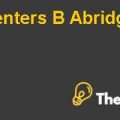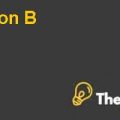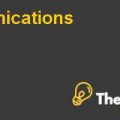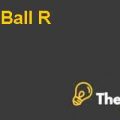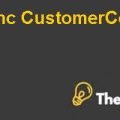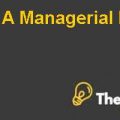JIM LANDER AT THAMESFORD LOGISTICS Case Study Solution
Problem Statement:
Jim Lander, an operating manager, has been working with Thamesford for 20 years and has built a strong image of an efficient and successful manager. Dan Rollins Chief Financial Officer of Thamesford, have known Jim Lander for sometimes before joining Thamesford. They both met under difficult circumstances, where disputes arose and resulted in Lander filing case against Rollins.
Steve Golden, Chief Executive Officer of Thamseford, knows Jim Lander and Dan Rollins for years and has asked both of them to get into a joint operation for assessing the effectiveness of the acquisition. After hearing arguments from both sides, Golden realized that even if they both agree to work together, a dispute will arise on the matter of raising funds for the acquisition. Because “Lander prefers to arrange the finance through building equity, but Rollins wants to fund the purchase through debt borrowings.”
Analysis:
The case revolves around Lander and Rollins. Golden is concerned about the acquisition decision, which may not end well unless Lander and Rollins put their differences aside and work for the benefit of Thamesford.
During his decades of experience, Lander kept in rotating in each department and gained knowledge about every division of Thamesford (expect for engineering). Due to his loyal services, Lander was allowed to take some time (20%) to carry his side-businesses. Lander availed this time by experiencing and investing in other businesses.
During one of his side businesses transitions, Lander met Dan Rollins. In this transition, Lander and Rolling went into an agreement in which both of them were supposed to find a buyer for a coal mine, and in-turn the seller agreed to pay a 5% commission, which was to be divided among Lander and Rollins equally. Just after a week of expiring 12 months contract period, Lander made a deal with a potential buyer and earned 100% commission for himself. Since the purchaser was long contacted by Lander and Rollins, Lander believed that Rollins had cheated on the deal, and has deliberately delayed the agreement to cross the contract date. To claim back his share of commission, Lender filed a lawsuit (in May 2009) against Rollins, which is still in the pipeline.
The dispute has arisen from both sides. Rollins failed in convincing Landers that the incident was not a result of a deliberate act and Lander could not give Rollins a chance to reason his decision.
Alternatives:
Replace either one or both:
Golden is confident about the capabilities of both individuals (Rollins and Lander), but is also aware of their personal differences and know the risks of losing valid acquisition decision if they don’t act professionally. Since the risk of failure is too high, Golden should consider replacing one or both with other individuals.
Keep Financing Decision Making to himself:
The biggest problem statement is that Lander prefers to arrange the finance through building equity, but Rollins wants to fund the acquisition through debt borrowings. Golden can diminish the problem by keeping the final decision authority to himself. Golden may allow Lander and Rollins to act independently to find a reliable solution and clears his intention of keeping the finance decision to himself.
Based on figures:
Another useful alternative would be to instruct both of them, to base their suggestions upon practical reasoning and estimated figures, indicating the ups and downs of their suggestions regarding profits and losses. Since it’s not a revenue based decision, proposals would include estimated profit or loss, backed-up with all possible expenses and earnings.
Outsource the job:
An all-time solution to every problem is outsourcing. Hence Golden may also outsource the acquisition implementation, to avoid any damage that may affect Thamesford from the arising dispute of Lander and Rollins. However outsourcing can be costly, and personnel involved may only consider short term effects, leaving behind the long run benefits or losses, to meet the given deadline and earn a commission.
Decision Criteria:
To select the most appropriate alternatives, we should draw a borderline or highlight key factors,which must be present in the outcome, so that only such options which are likely to fulfill the requirement will be chosen. Following are such key decision criteria factors.
Cost Effective –
The alternative must be assessed on a cost basis by assessing the implication cost so that the cheapest alternative could be highlighted.
Gearing Effect –
Golden must have some concerns about the effect of the acquisition on Thamesford’s capital structure. For example, assuming Thamesford has 50% equity and Golden is willing to maintain the current gearing ratio of “1”. In such case, only those suggestions which are likely to result in 50% debt and 50% equity appraisal will be shortlisted.
Long-Term Purpose of Acquisition –
Golden may be expecting to hold on to the purchased acquisition for a long term, or may be purchasing to experience the market factors, and sell shortly. Let us assume that acquisition is purposed for long-term.
Usefulness of the Resources –
Since the target company is also from the logistic industry, Golden may be planning to shift some of the acquired assets to Thamesford’s home country. Hence it should be considered that the selected alternative does not result in marking debt charges on these assets....................
This is just a sample partial case solution. Please place the order on the website to order your own originally done case solution.


